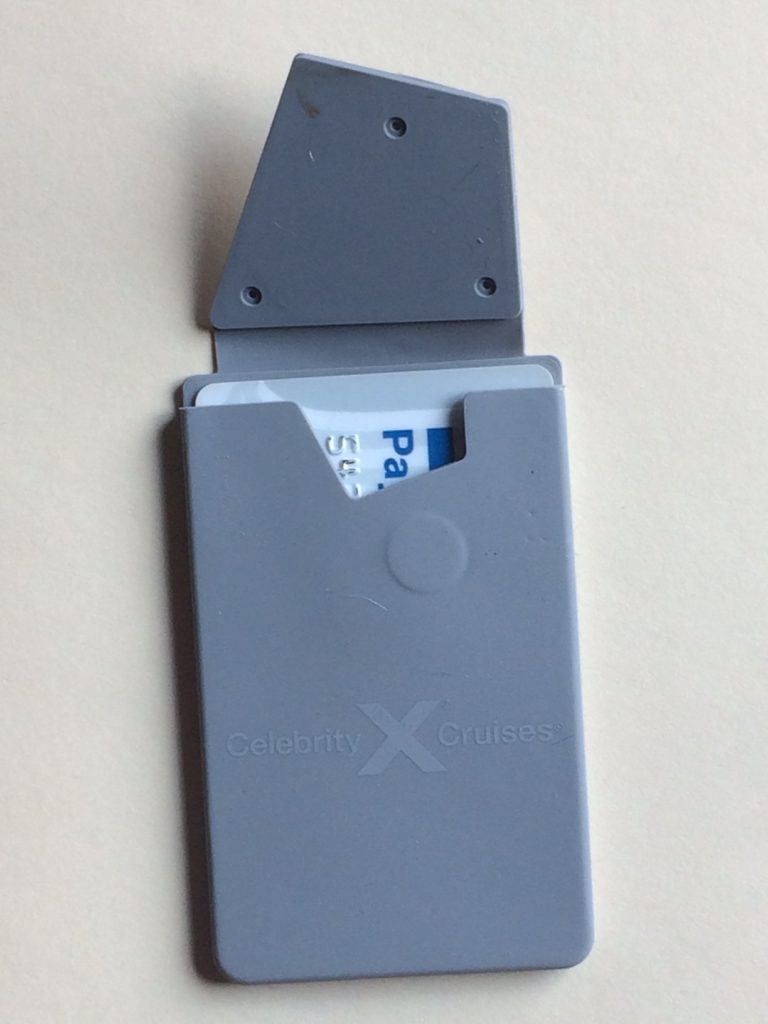 Recently, I was on a European cruise on which every passenger was given a nice faux-leather case in which to keep your stateroom keycard. (See picture above.) Though a nice, generous gesture, it quickly became a fiasco.
Recently, I was on a European cruise on which every passenger was given a nice faux-leather case in which to keep your stateroom keycard. (See picture above.) Though a nice, generous gesture, it quickly became a fiasco.
The flap that prevented the keycard from falling out contained a magnet; the magnet demagnetized the keycard, making it inoperable. When I approached the front desk, the attendant quickly took out a pair of scissors, cut off the flap, and declared, “now it will work”; and created me a new keycard. I’m not making this up: a few days later they gave everyone a second, identical case.
Often, I try to recreate in my mind how something like this could have happened.
So … members of the cruise line’s marketing team are sitting around a table brainstorming on how to create value-added giveaways. Someone thinks of giving each passenger a faux-leather keycard case. Everyone likes the idea, someone is assigned the task of getting the object manufactured, and they break for lunch.
The cruise line orders 100,000 units (better price in large quantities), which are shipped to the ships, put on passengers’ pillows, and …
Don’t ever launch a product or service without submitting the idea to a focus group. Focus groups don’t need to be complicated or expensive. Simply describe the product or give a prototype to potential end-users and listen to their feedback. (Preferably, members of the focus group should be end-users. A common mistake in business is to create a focus group of buyers, not users. Often, buyers are wholesalers, not end-users.)
But sometimes focus groups malfunction. That’s why there’s no substitute for testing —submit your product to actual experience.
For instance, a focus group might have approved of the concept of the keycard holder, and if a prototype was available, they might have enjoyed handling the faux-leather and thought the magnetic closure clever. But the design flaws would not be revealed until the prototype was put on the pillows of actual passengers.
Use focus groups and test.
[reminder]What are your thoughts about this essay?[/reminder]

In my industry there are roughly 50 products that are marketed and sold daily that all have a design flaw. As a competitor we have pondered how all these profucts have made it to market without anyone noticing they are deficient. Our conclusion is that the manufacturer’s have only lab tested the products, not field tested. We have a similar product but we won’t release it until we have extensively field tested. A pretty simple approach to solving problems if you ask me.
Brandy, thanks for writing. It seems simple, doesn’t it – test it in the field. I just put together a baby bed and there are permanent stickers on it regarding child safety. I cannot remove them without taking the paint off the bed. I called the distributor (bed made in China) and they said, “Yes, we’ve received a lot of complaints about this but there’s nothing we can do.” Why didn’t they field test this, first?
Thanks for our friendship.
Don,
That key card holder fiasco is a funny story – it was not even an unintentional misuse, the passengers were using it as intended! I have seen these kind of things happen in other industries. When we are designing a Medical Device, we must (by regulatory statute) consider the Human Factors (HE75) and Usability (IEC 62366) of the device, which includes defining the User Groups, the User Capabilities, the Use Environments, and the Use Scenarios. The use of a Focus Group in our world is called a Usability Study which puts the device in the hands of the actual Users as they practice through the Use Scenarios. The process catches a lot of even very subtle issues before the device or product is released for general use. Too bad that you had to do the Usability Testing on this device yourself!
Thanks, Garyld, for sharing your thoughts. All the regulations you are required to abide by might seem to be invasive, but it sounds like they do the trick. You are involved in incredibly complicated work; I admire you for that. Don